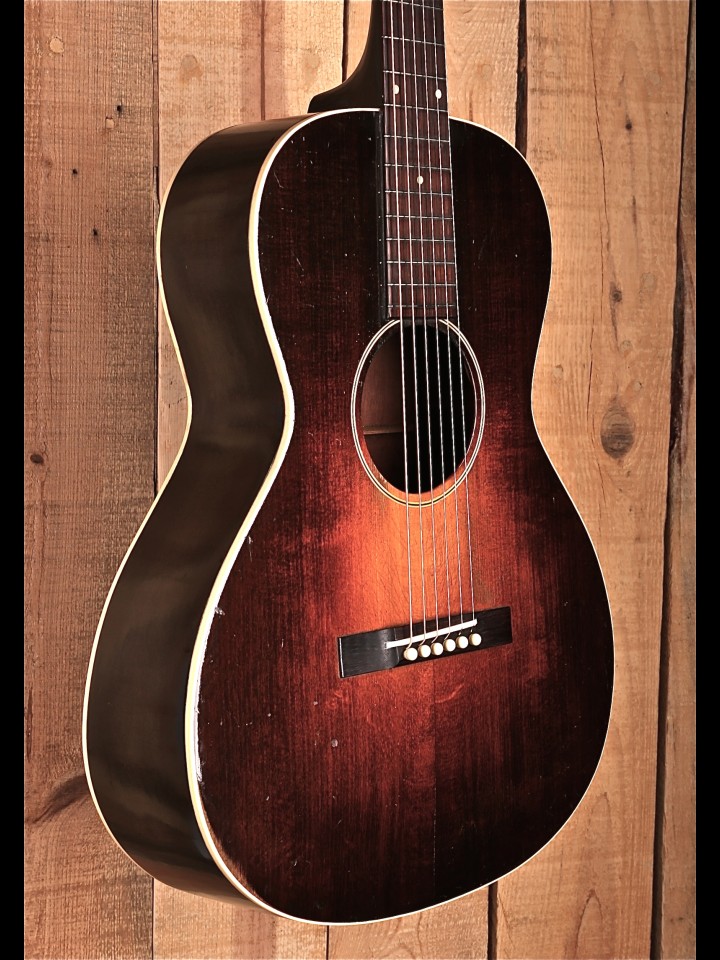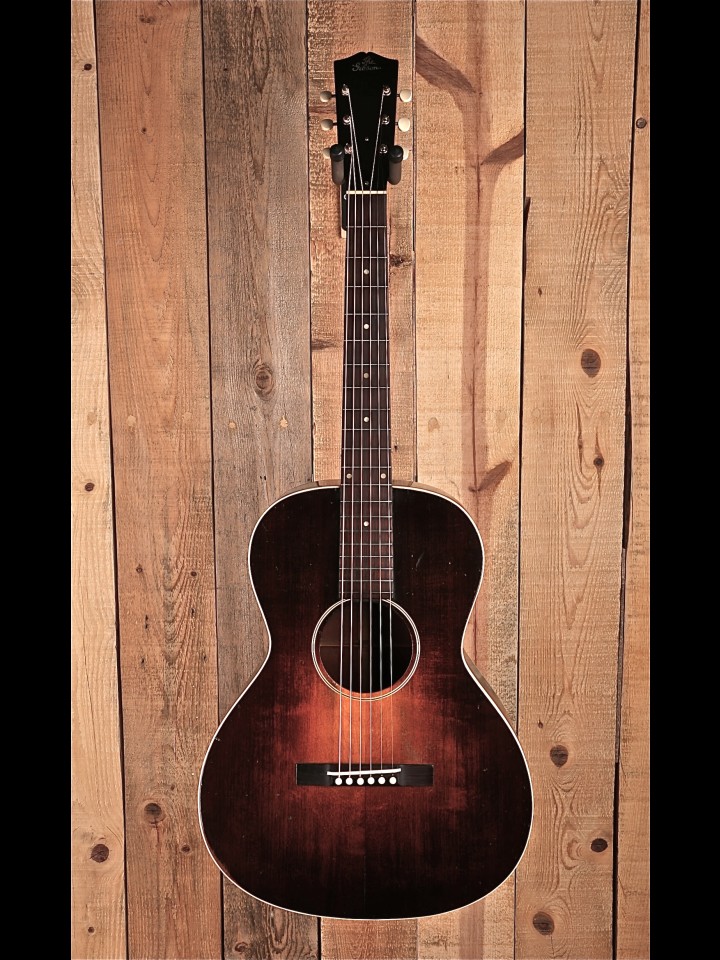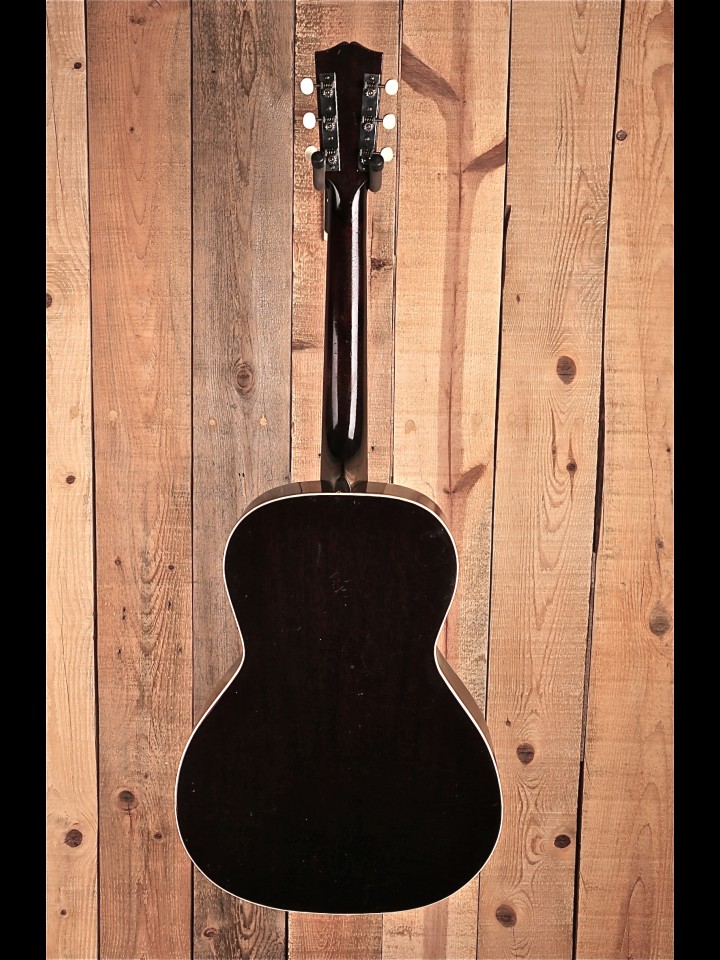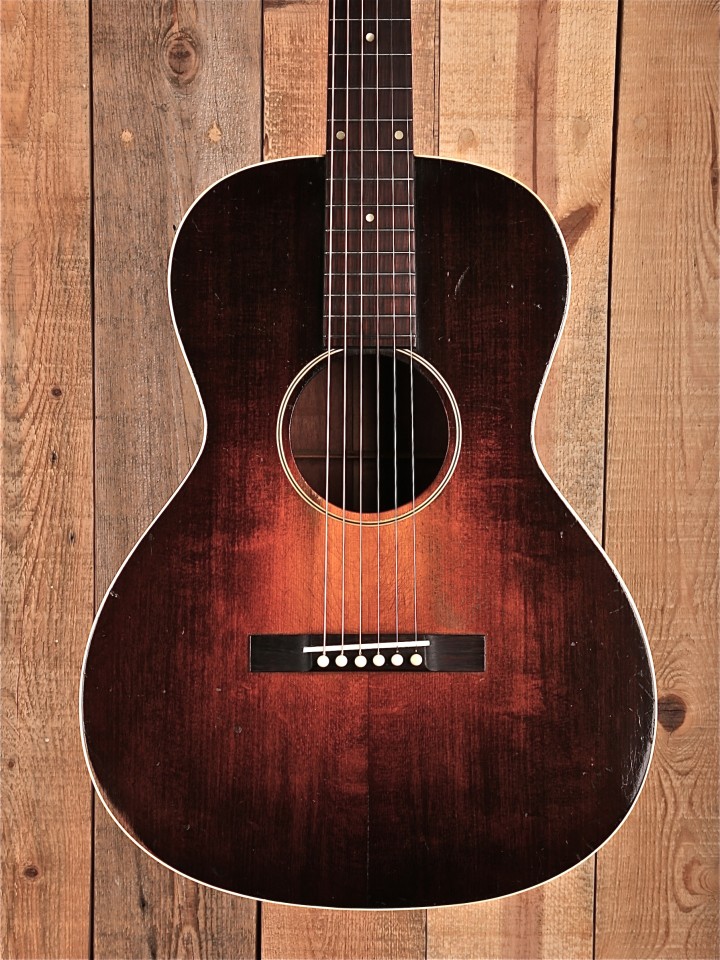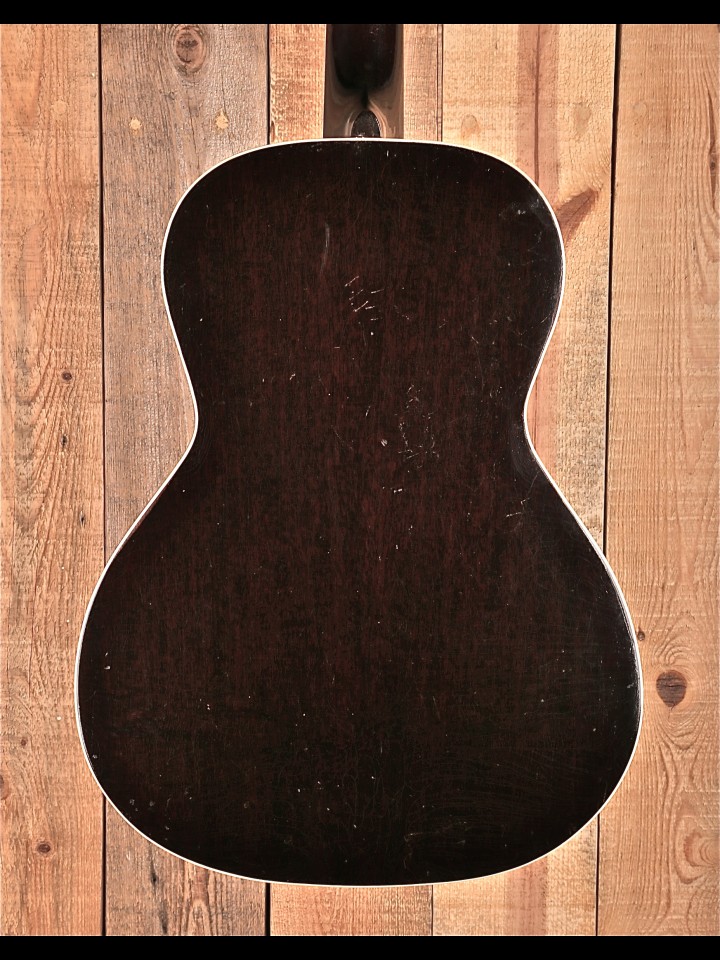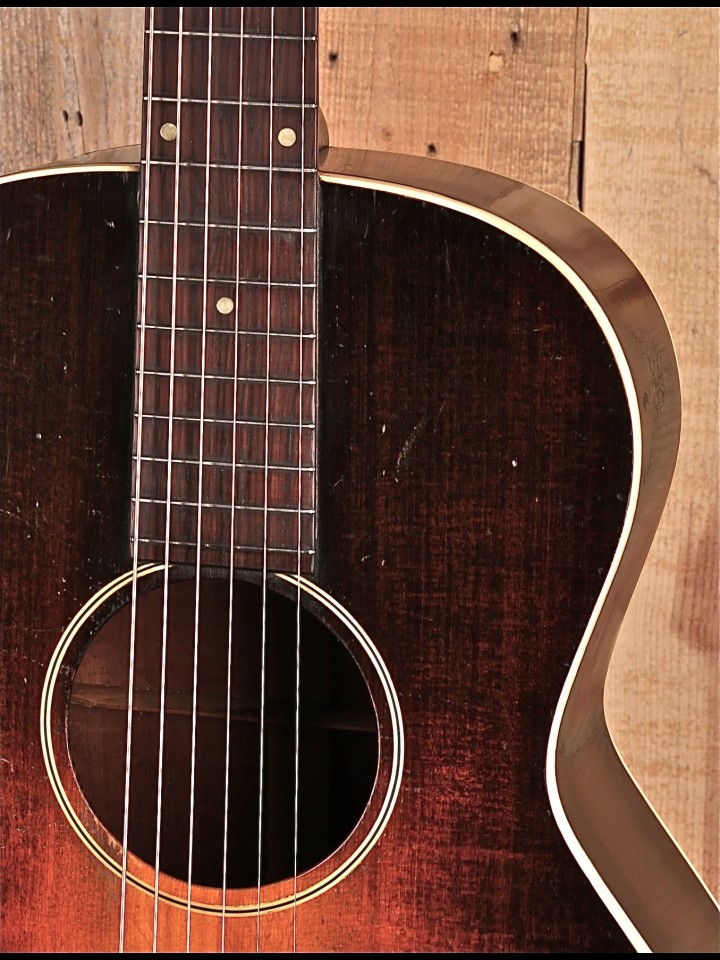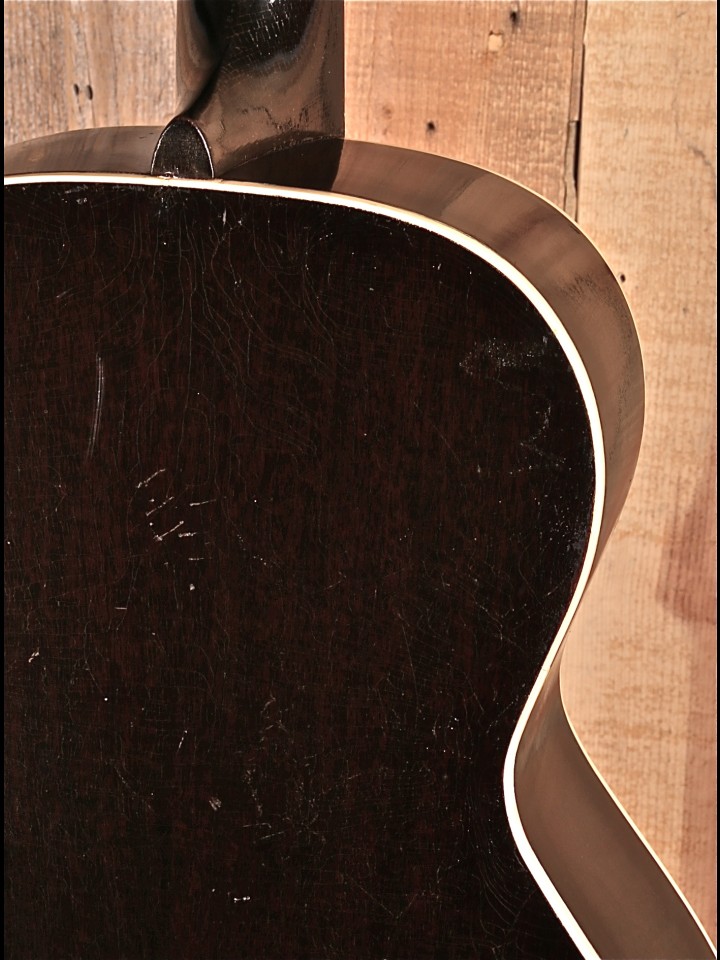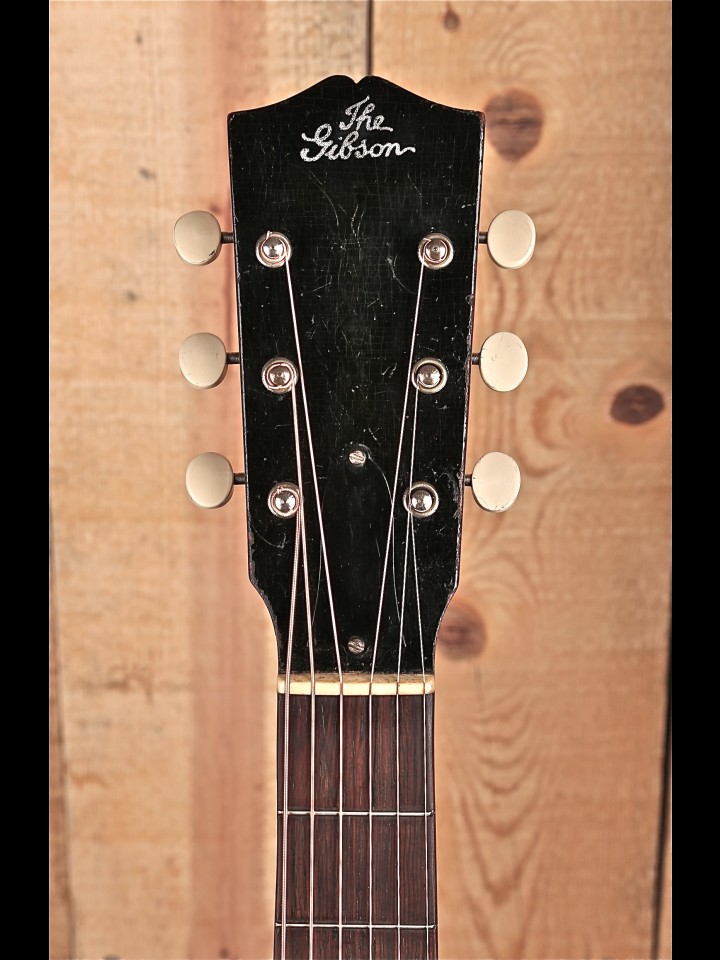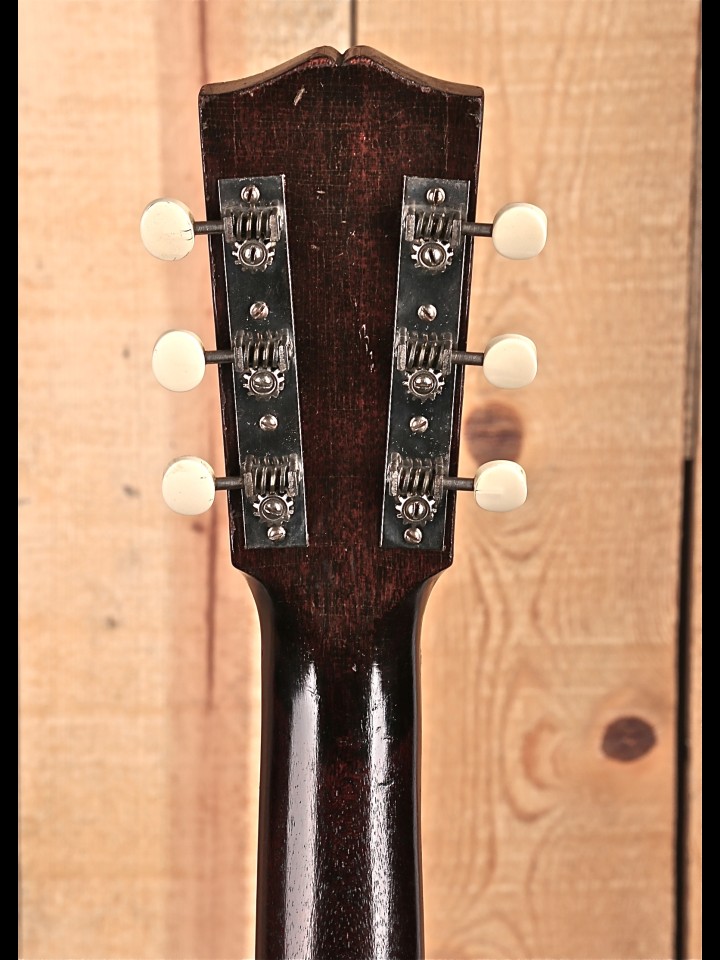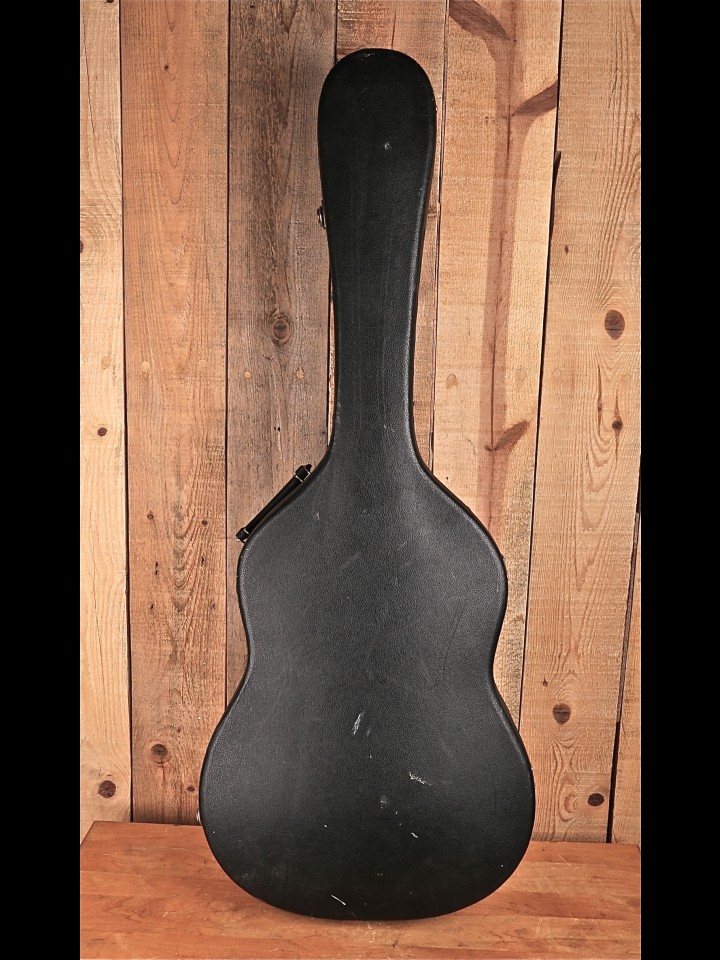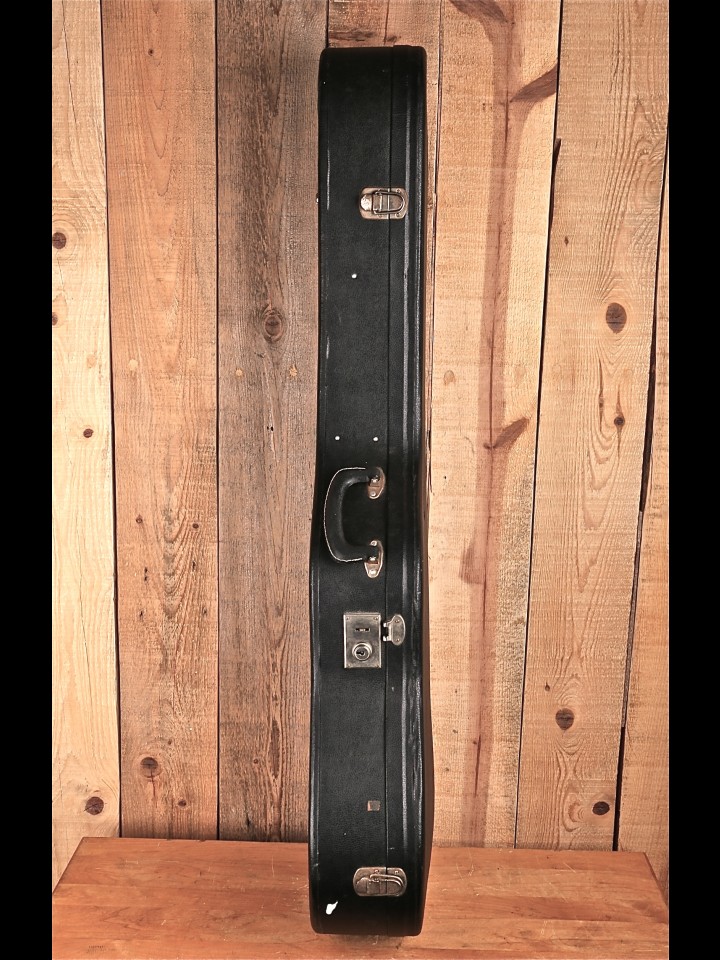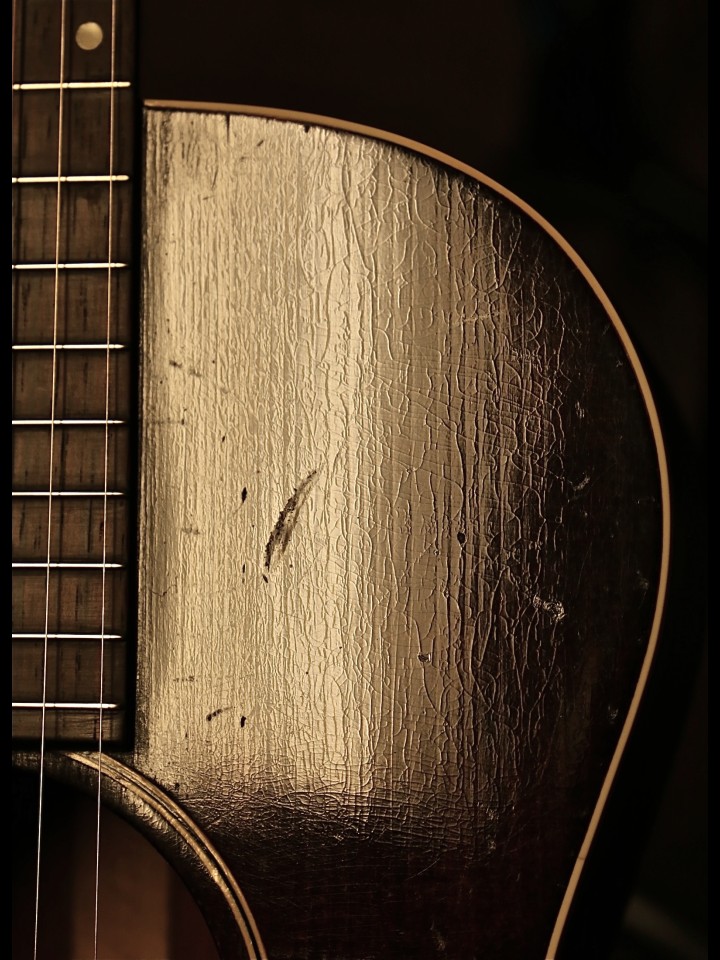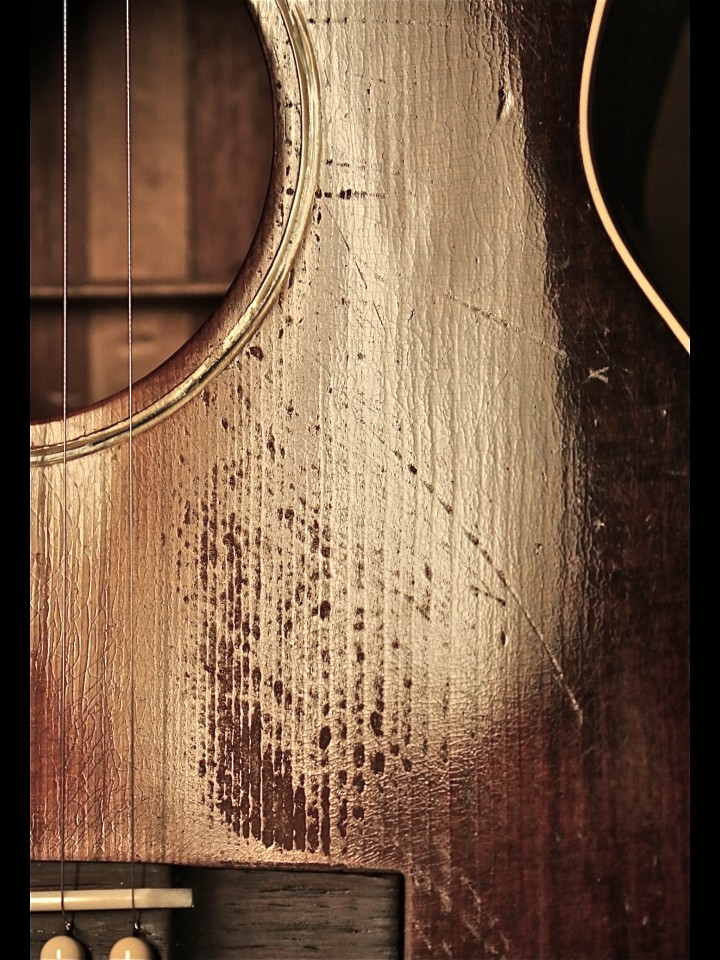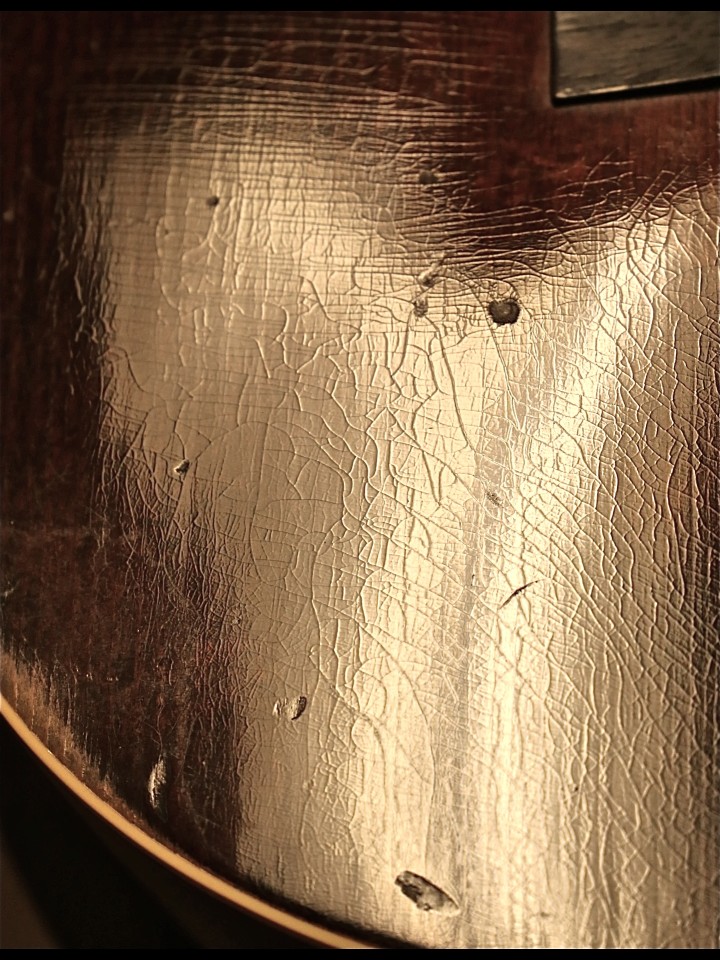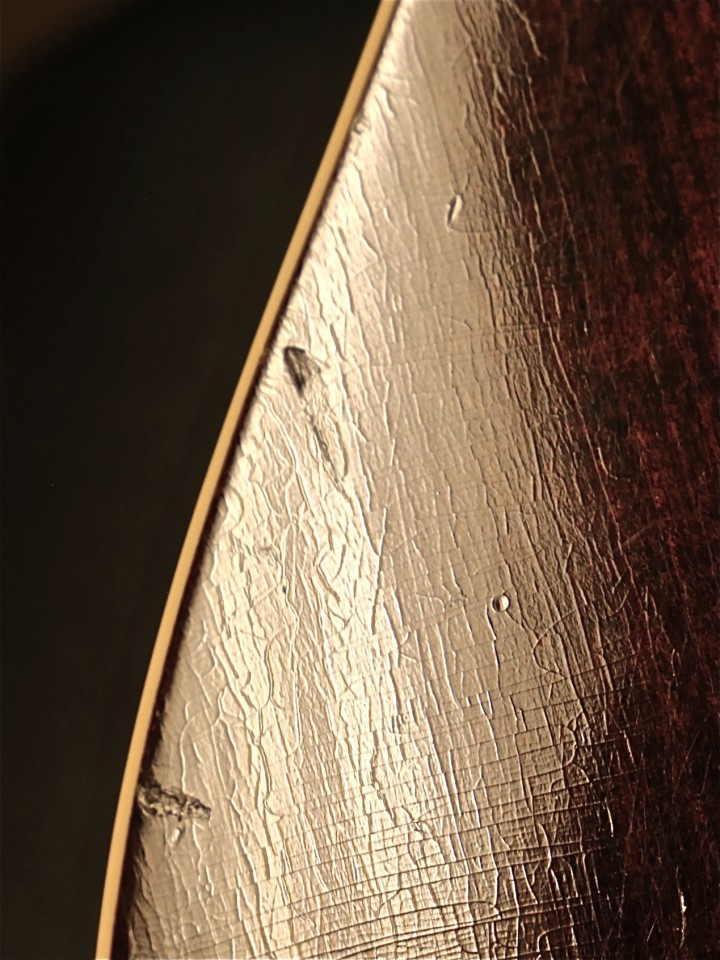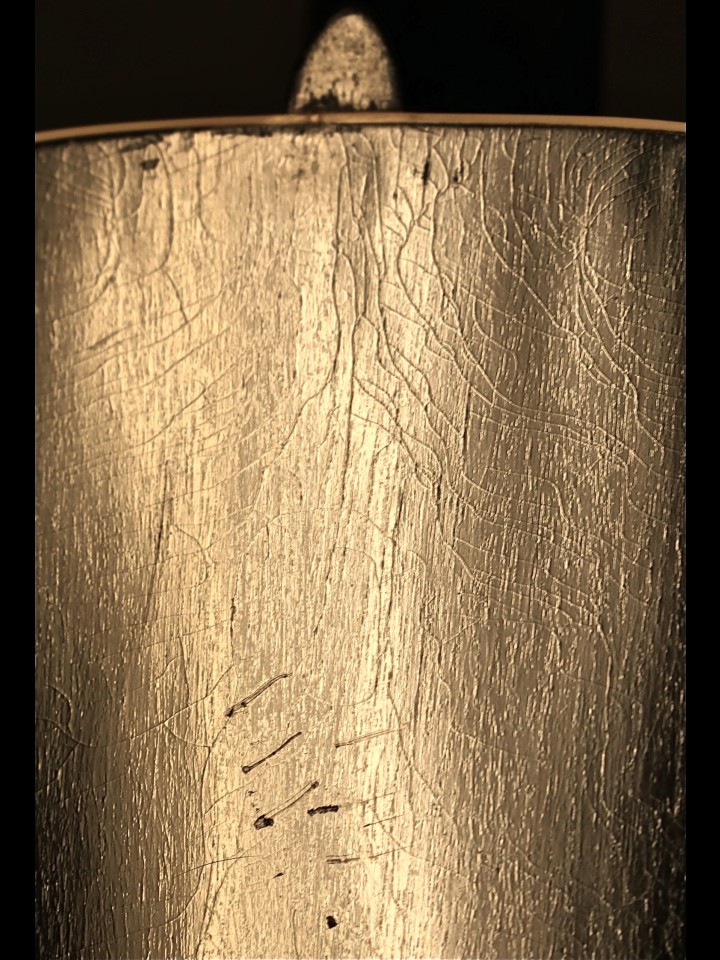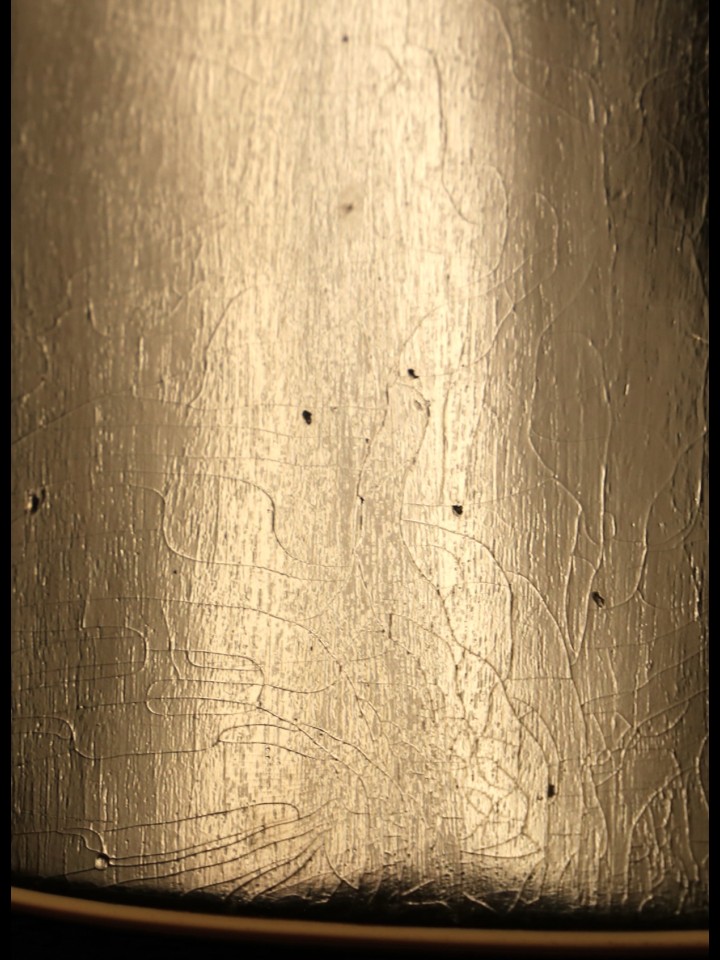1931 L-1 12-Fret
When it comes to vintage acoustic guitars, there is little more tantalizing than a Martin or a Gibson produced between 1920 and 1940 (or, perhaps as late as 1945, if we’re being totally honest). This period of time is often referred to as a “golden era” of acoustic guitar production; but, in many respects, this period can more accurately be described as a time of discovery. This is particularly true of the 1920s, during which time the popularity of and subsequent demand for steel string guitars gained tremendous momentum. As evidenced by numerous and often significant changes made to their offerings during the ‘20s, companies like Gibson and Martin had yet to truly hit their stride as they explored fundamental steel string guitar design elements. Of course these evolutionary steps are all understandable, particularly as there was no precedent to inform these companies as to how one should contend with all the added string tension, or even just what the heck a steel string guitar should sound like or feel like!
Yet, by the late 1920s and very early 1930s a lot of early experimentation had begun to coalesce, such that some now legendary designs began to take more “permanent” shape. True, further evolution and some major developments were still on the horizon—perhaps, most significantly the rapid shift of focus to producing 14-fret flat tops—but the rudiments of great sound and classic proportions became much more well-established. In the case of Gibson’s L-body models, a great many changes had been made in a relatively short period of time. The L-1 was introduced in 1902 as a relatively small arched top acoustic with a 13.5” lower bout, before it morphed into a flattop that retained the same general soundboard template in 1926. Then, somewhere around 1929, the L-1 emerged with a new wider soundboard template with a 14 ¾” lower bout width. Though the L-1 would remain a 12-fret model for another two years, it had effectively taken on the classic shape and general proportions that we now associate with Gibson’s L-00 body.
Despite their similar body proportions, the 12-fret L-1s of this era are readily distinguished from the 14-fret variants that soon followed in 1932. For example the 1929-1931 L-1s still featured the turn-of-the-century smaller “The Gibson” script headstock logo; and, these transitional 12-fret models sport a hand-rubbed oil-based Cremona sunburst, which is prized for its tasteful visual warmth and subtle transitions in hue. More importantly, 12-fret L-1s hailing from this brief period were physically lighter and more delicately constructed than the guitars Gibson would go on to produce through the pre-WWII era. Indeed, this lightweight construction is immediately evident when one handles this particular L-1, which feels like it could either float away into the ether or simply implode at any given moment! It is therefore easy to appreciate how so few of what was already a fairly limited number of ’29-31 12-fret L-1s have managed to survive over the years. Thus, encountering an example as clean as FON 9920 223 here, is most certainly a rare occurrence.
Collectability and market scarcity aside, the experience of actually playing one of these 12-fret L-1s is also a rare treat. On its own, the delicate construction yields a crisp and airy resonance, an ultra-sensitive response, and an explosive projection—quite frankly, the power of this guitar’s presence is just downright startling. Yet, as we know of 12-fret steel string guitar behavior in general, the more central placement of the bridge naturally infuses the voice of the guitar with an extra degree of openness, warmth, and dimension. When packaged into a mid-sized 00 body, these traits are presented with a pleasing measure of balance and clarity, especially with respect to the mid-range. This particular L-1 exhibits a distinctive playful bounce in the low end that contributes a little more breadth of tone and “thump” to its voice. Ultimately, this dry and direct voicing translates to an attractive purity and focus in terms of note production that, in turn, makes a guitar like this L-1 ideally suited for recording applications, in addition to being just a damn fun guitar to play. In short, this L-1 is not only a phenomenally well-preserved rarity, but also an exemplar of vintage tone with a presence and dimension that defies its compact size.
Condition
In light of this beautiful L-1’s age and its featherweight construction, it is in remarkably well-preserved condition, with no major points of structural damage nor any truly significant cosmetic detractors to note. Of course, as is common of vintage Gibsons, the entire finish of this guitar has checked and otherwise developed a lovely worn-in patina. And, as one would expect of an instrument that is approximately a century old, one will readily observe various minor dents, dings, and scuffs, consistent with age and use upon close inspection. Still, this L-1 is perhaps the cleanest example we’ve ever encountered!
While we have no concerns about the guitar’s function (apart from the fact that it is fundamentally delicate!), there are a few structural notes that bear mentioning. Most significantly, the top of the guitar does exhibit some distortion as a result of the interplay of an extremely light top and years of string tension. Subsequently, there is a healthy bellying of the top behind bridge along with associated cupping of top in front of bridge extending to middle of soundhole region—again, this is readily evident but not severe! In concert with the top belly, the bridge does have a bit of lean/forward pitch, but the guitar still intonates very well. There is evidence of prior neck re-set, but the frets appear to be original with fair mass (they were not too tall to begin with!). Internally, we do not see any bracing issues, but we do note that the original bridge plate is has been plugged and re-drilled (a la a bridge saver). There is also some indication that the bridge mass/height has been reduced slightly on the front side—this was likely done to improve saddle clearance at a time when a neck reset wasn’t an option. The original Waverly 3-on-a-plate tuners are in good shape with minimal shrinking of buttons, but we do note that the low E button has an incipient crack coinciding with the shaft, though the button itself is stable. NOTE: As this guitar is quite delicate, it is not recommended to use anything but an extra-light string (e.g., .010” - .047”), unless one is keeping the guitar in a lower tuning, such as Eb or D standard, where a step up in gauge could probably be tolerated. EXCELLENT+ Condition
- 12 Fret 00 Body Style
- Adirondack Spruce Top
- X- Bracing
- Mahogany Back and Sides
- Hand Rubbed Cremona Sunburst Finish
- Multi-Ply Single-Ring Rosette
- Single-Ply Crème Top and Back Binding
- Mahogany Neck
- Rosewood Fingerboard
- Dot Inlays (to the 15th Fret)
- Small Script "The Gibson" Peghead Logo
- Original 3-on-a-Plate Waverly Tuners With Creme Buttons
- Rosewood Bridge
- 1 11/16th” Nut Width
- 25” Scale Length (slightly under)
- 14 ¾” Lower Bout Width
- 4 ¼” Body Depth at End Block
- Bone Nut
- Long Contoured Bone Saddle
- Period Black Hardshell Case
| Brand | GIBSON |
| Model | L-1 12-FRET |
| Serial Number(s) | 9920 223 |


